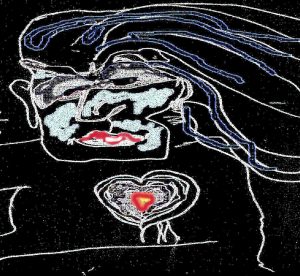__________
Beings are numberless, I vow to save them by living as a monk.
Obstructions are numberless, I vow to end them by living as a monk.
Dharma gates are endless, I vow to enter them by living as a monk.
Buddha’s Way is unsurpassable, I vow to live the Way by living as a monk.
__________
Living as a monk is a refuge. The monk takes refuge in the spiritual adventure of seeking the Unborn, Undying Way, meets what shows up without ego concern, and in the company of transcendent being. The monk is willing to drop whatever may hinder the Way of following these vows.
The monk seeks to follow the axiom, to study the self is to forget the self and meet the myriad things of life which come to awaken; right here, right now.

 In many respects living as a monk is like a tree that stands still. The branches may tremble, but the roots are still. The enduring stillness gives clarity and provides shelter for all sorts of creatures. It does not discriminate between beings and offers the power of awareness to all beings.
In many respects living as a monk is like a tree that stands still. The branches may tremble, but the roots are still. The enduring stillness gives clarity and provides shelter for all sorts of creatures. It does not discriminate between beings and offers the power of awareness to all beings.
The refuge of a monk includes a path of solitude, silence, stillness, sitting, and study, but is not limited to this list. These aspects of living as a monk, however, are a shelter for the monk and for the world of others. The monk, like the tree is a presence of stability, shelter, strength, clarity, and purity. Living as a monk requires retiring to these devotions again and again.
In order to retire, the monk must be willing and able to drop the things of the world that hinder access to the Way. It takes a strong mind and heart to withstand the wind, the rain, the thunder, the lightning, the cold, the ice and snow, the hot parched days and all the creatures that benefit from the flowering and shade.
Monks need a Master which need not be another human being. But a Master that will demand discipline and steadfast energy in order to help the monk concentrate and focus. Often this is an art form, a fulfillment of a duty, or a service. The Master provides the mind a way to concentrate. Without concentration the mind is jumbled making calmness very difficult. With calmness the power of clarity and decision-making follow and the monk is available to offer selfless care for whatever shows up right here, right now.
The monk needs a teacher. A teacher is there as a guard rail when things get rough and they do get rough. A teacher also helps the monk stay between the lines of the path and also points out when the monk is in the ditch. The teacher acts as a verification and correction when the monk walks the path. The monk needs a teacher who has, foremost, the spiritual well-being of the monk at heart.
Finally, the monk must have a willingness to take up the vows without coercion and to follow the Way. To live as a monk must come from the willingness and relinquishment of the monk alone.
______________________________
One way to differentiate the life of a monk is to look at the old rites and rituals of a warrior. In primitive tribes, the young warrior was prepared for battle – but once the battle was over, he needed assistance to return to the householder life of co-operative order amongst his people. In order to return, he needed to be purged of his bloodthirst – to relinquish the taste of blood and calm down.
It is a similar process for the monk. He needs training, rites and rituals to prepare for the spiritual battle – once he or she decides to leave the householder life and enter into a spiritual path he must be willing to purge himself of the thirsts of greed, hatred and delusion – to relinquish the taste for the world and calm down.
Author: FaShi Lao Yue
Image credits: Fly, 2019
ZATMA is not a blog.
If for some reason you need elucidation on the teaching,
please contact editor at: yao.xiang.editor@gmail.com

